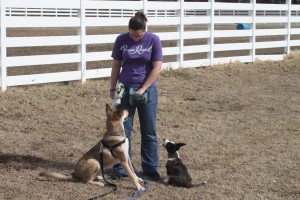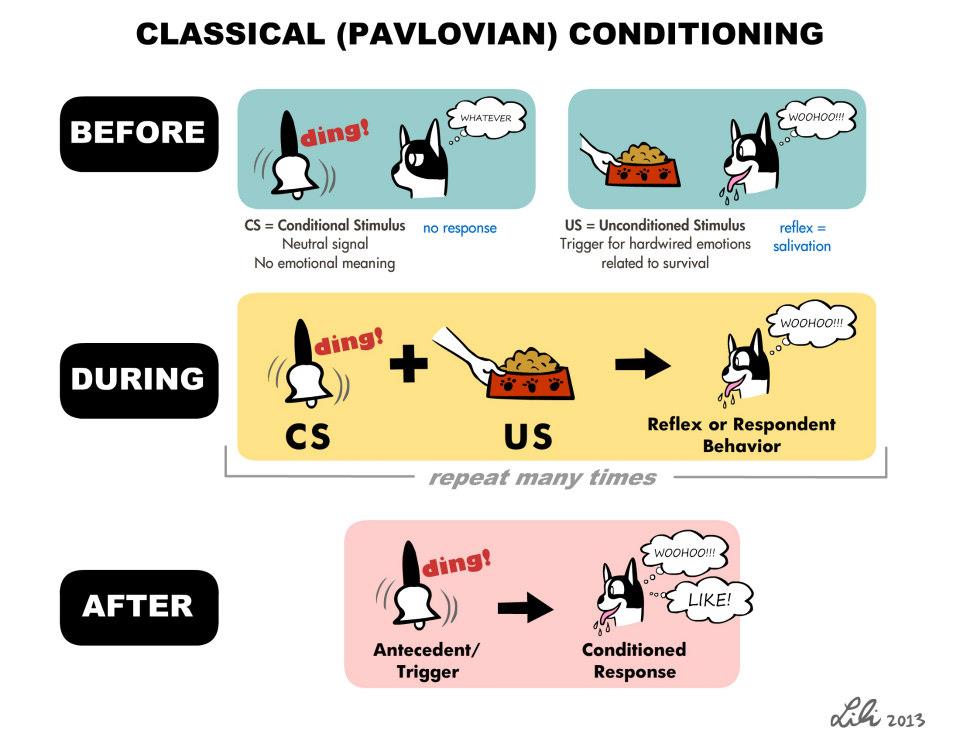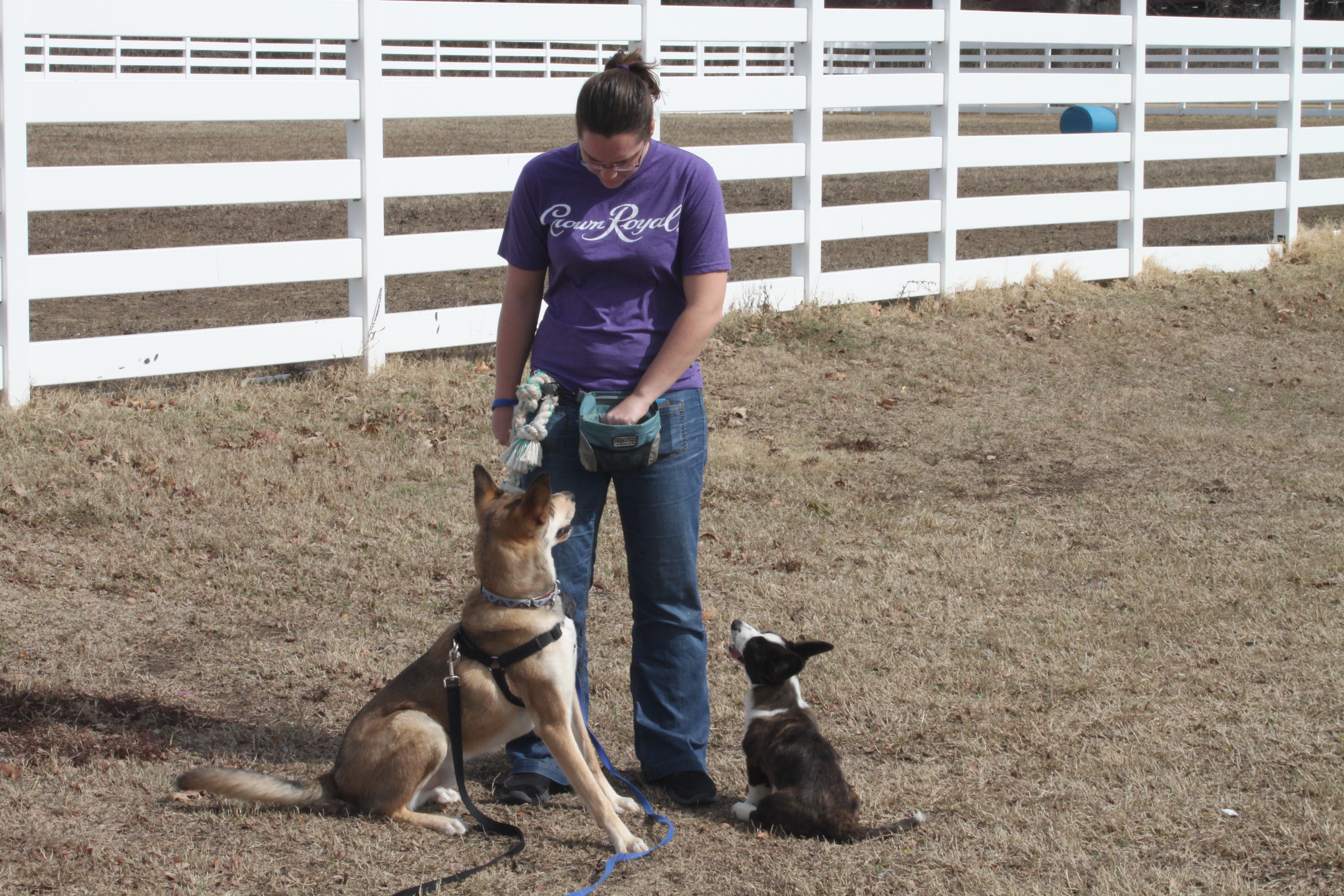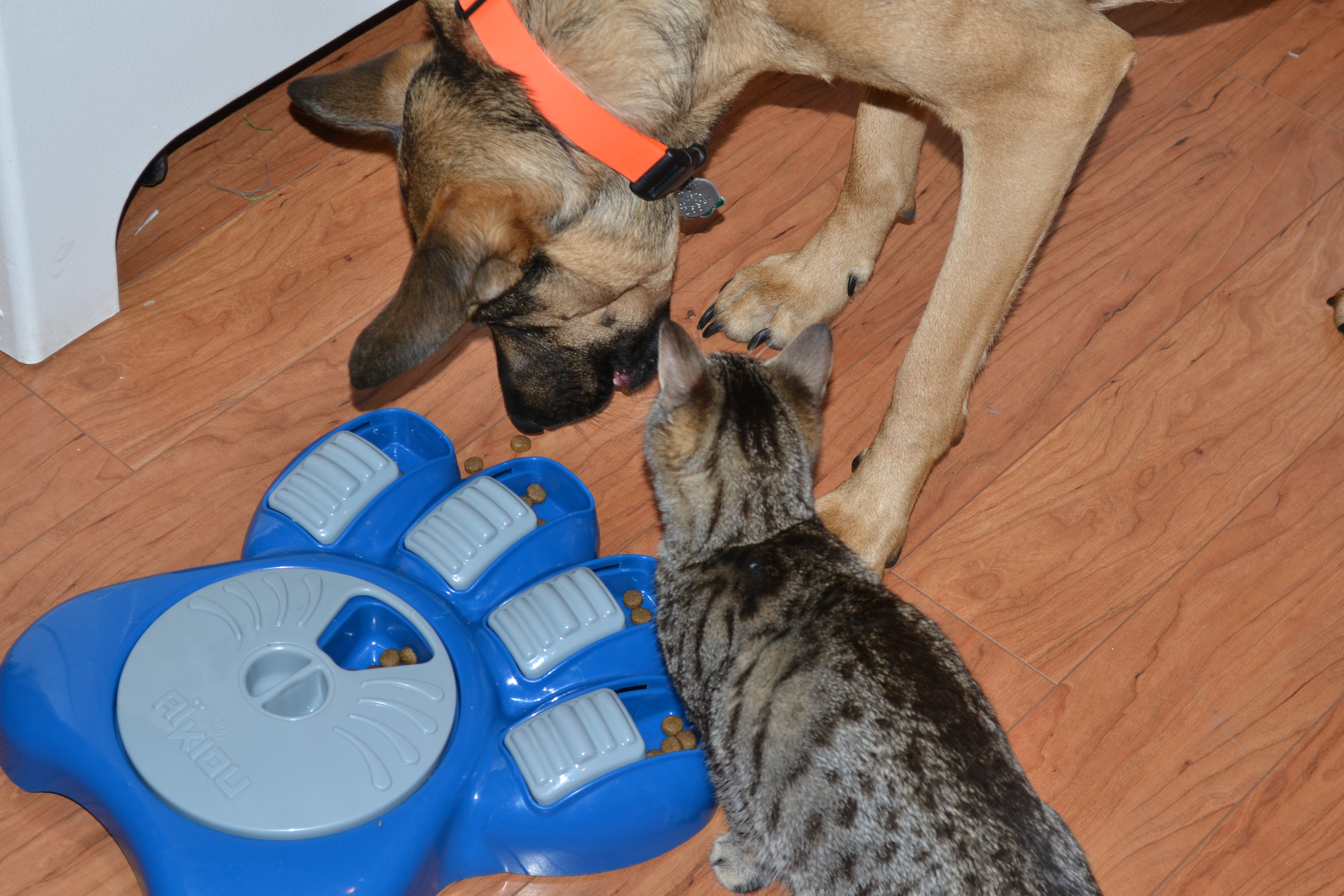 Ever eat ice cream when you are down? Does it make you feel better? It should brighten your mood because eating comfort foods stimulate endorphins in your brain that give you that “feel good” sensation (unless you are one of the rare people that hate ice cream that is). The endorphins are natural stress fighters and are even called “natural narcotics”. Have you ever heard of narcotics being addicting? Exactly. This is a contributor as to why training with treats and play creates such a strong bond between humans and why treats are convincing enough to change emotional responses to fear-stimulating triggers.
Ever eat ice cream when you are down? Does it make you feel better? It should brighten your mood because eating comfort foods stimulate endorphins in your brain that give you that “feel good” sensation (unless you are one of the rare people that hate ice cream that is). The endorphins are natural stress fighters and are even called “natural narcotics”. Have you ever heard of narcotics being addicting? Exactly. This is a contributor as to why training with treats and play creates such a strong bond between humans and why treats are convincing enough to change emotional responses to fear-stimulating triggers.
Use Endorphins to Your Advantage
Endorphins are chemicals that are naturally produced in your dog’s brain. They produce the “good feelings” one might get when eating their favorite comfort foods. This is why food is so effective for training. When used correctly, you dog sees you as a pathway to access what it wants. Food should not be used for bribing. Here are some great ways to use food and the endorphins it triggers in training:
Counter Conditioning
Feeding your dog treats while he observing a scary object/animal will help change their emotional response to it. It is important your dog is not over-threshold, but after some repetitions you dog should look forward to that once scary situation.
Note: Fearful emotions don’t change over night so it takes multiple repetitions. But eventually, instead of fearing the scary object or situation, they will look forward to it because it brings yummy things! Simple as that! (or almost!)
There is no way to “snap the dog out of it” when the dog is fearful. Fear comes out in two ways: fight or flight. Karen of Deeds Canine Connection states that dogs are either extroverts (lunge/bark) or introverts (would rather hide) when it comes to their response to fear. This is why many “aggressive” behaviors are based in fear rather than the desire to injure another animal. Food, when given at the right time, will help change the dog’s attitude towards the scary situation.
Classical Conditioning
 Classical conditioning is all about creating good feelings about certain situations. The common phrase “Pavlov is always on your shoulder” is often repeated in the dog training world. Pavlov is the man who discovered and coined the term classical conditioning. Basically, it means no matter what you are doing, your dog is always learning and creating associations – thanks to those special brain chemicals. This picture demonstrates how classical conditioning works.
Classical conditioning is all about creating good feelings about certain situations. The common phrase “Pavlov is always on your shoulder” is often repeated in the dog training world. Pavlov is the man who discovered and coined the term classical conditioning. Basically, it means no matter what you are doing, your dog is always learning and creating associations – thanks to those special brain chemicals. This picture demonstrates how classical conditioning works.
Operant Conditioning
Clicker training pairs a sound (conditioned stimulus) with food (unconditioned stimulus). After just a few repetitions, the dog will associate (by way of classical conditioning) that the “click” sounds means food is coming. After that, you can use the sound to help the dog identify exactly what behavior is correct. The dog learns how to perform behaviors that make that “click” sound go off and then get the food they want. This means, the dog knows how to manipulate their actions to get what they want. See my previous articles on Skinner’s (Operant Conditioning) Quadrants to learn about the four quadrants of operant conditioning. This video shows a puppy learn with clicker training for the first time:
Give it a Try!
Using food in training should be normal and not looked down upon. It is a primary resource for dogs so all dogs should be naturally motivated by it in some way. Using food correctly in training will improve your relationship with your dog more than you can imagine. Give it a try by trying this “1,000 treat challenge“! Many behavior will not require 1,000 treats, but it is a great place to start to create a 100% solid behavior. Some behaviors you could teach with 1,000 treats are relax on a mat, stay, or rollover! Be sure to let me know how it goes!




